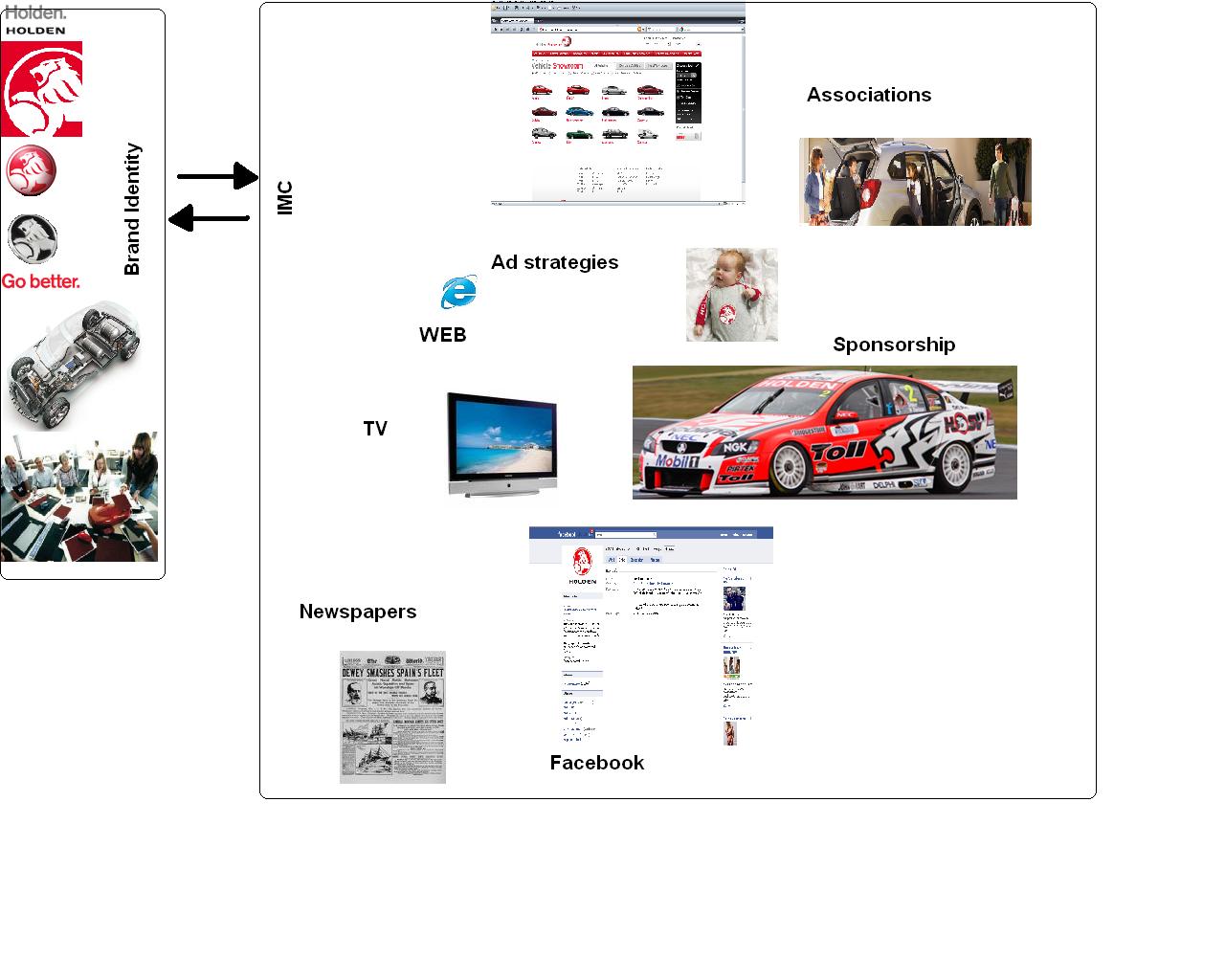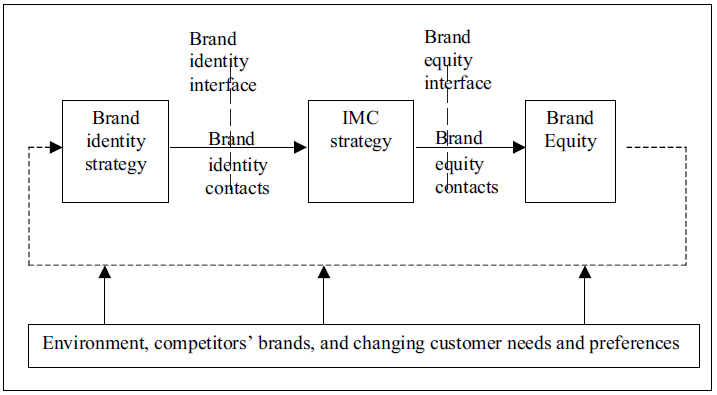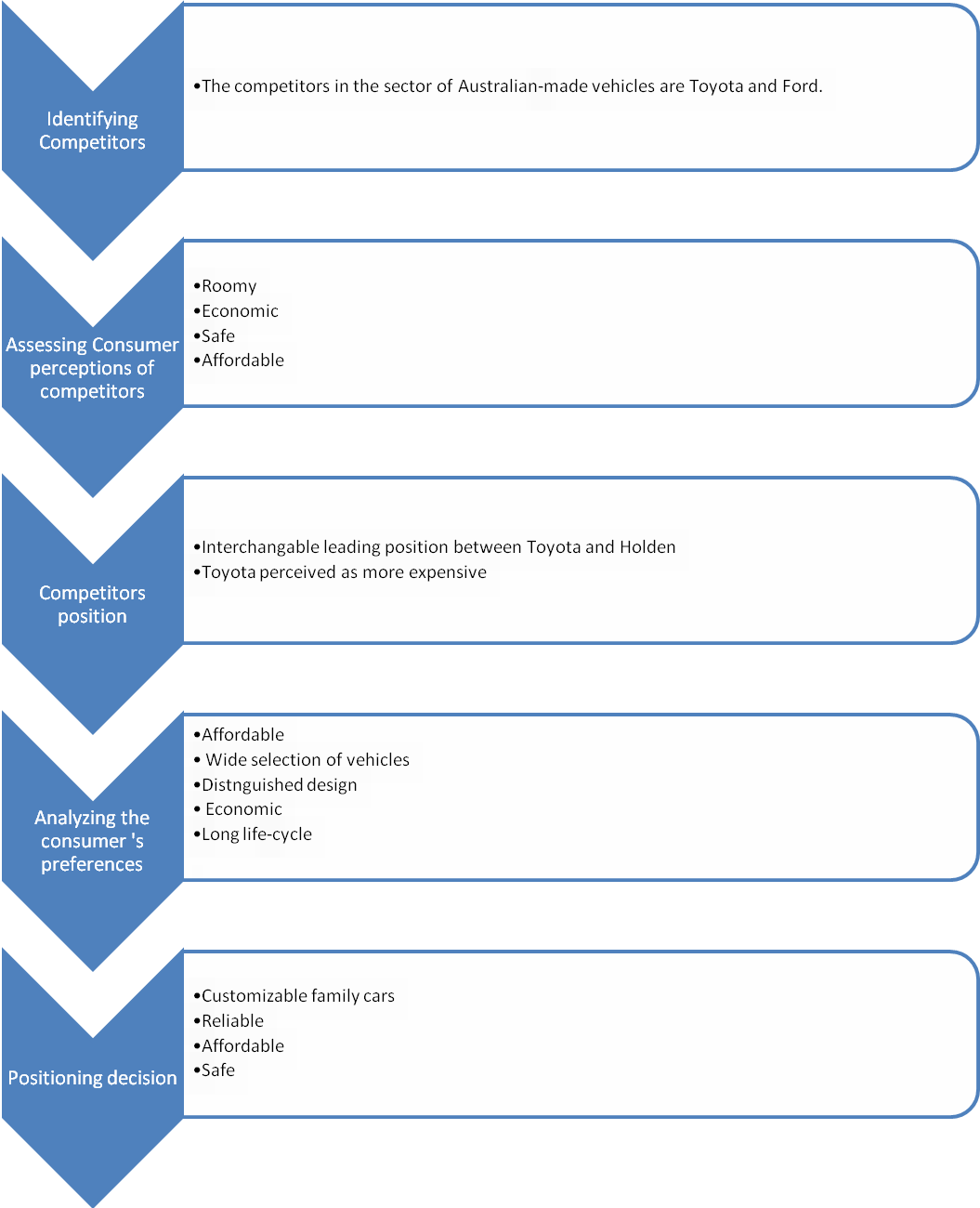Introduction
The constant changes in society in general and the business environment in particular, directly influence the consumers and the strategies used to reach them. In terms, of marketing, it can be seen that the fewer methods available for advertisement delivery in the past, emphasized the content of the message, rather than to whom it must be addressed. Integrated Marketing Communication (IMC) can be seen as a new outlook on old problems, where IMC suggests “more control over the marketing communications environment in which consumers form their preferences and enact their consumption choices” (Hackley, 2005, p.137). Outlining the importance of IMC, this paper provides an analysis of the role it plays in the brand building process, based on the example of GM Holden, an Australian car manufacturer and a subsidiary of General Motors Corporation, the US largest car automaker(GM Holden Ltd, 2008).
IMC and the Brand Building Process
The role of IMC in the brand building can be seen in that the main idea is in all communications being integrated around the brand. In that regard, the reception of a brand message from more than one channel reinforces the message, given that the channels’ messages are consistent (Hackley, 2005, p.137). Accordingly, the scope of this paper implies the usage of a uniform definition of the term brand and IMC. In that regard, IMC can be defined as “the process of developing and implementing various forms of persuasive communications programs with customers and prospects over time” (Reid, 2002, p.41).
A concept of the brand, on the other hand, is often approached as a notion of brand identity and brand equity, where brands, as described by McCann-Erickson WorldGroup are:
global icons with worldwide constituencies of millions… offering consumers experiences that enable them to engage physically, mentally, emotionally, socially or spiritually in the consumption of the product or service making the interaction meaningful and real (Hackley, 2005, p.60).
The significance of IMC in the brand-building process is providing the means for the delivery of the components of brand identity, which in the case of GM Holden can be seen in Fig. 1.

The role of target market selection in the brand-building process can be seen in brand positioning strategies. The positioning through marketing strategies can be seen as the final result of the target marketing process, in which the process consists of the identification of markets with unfulfilled needs, determination of market segmentation, and the selection of a market to target (Belch and Belch, 2003, p.43). In the case of GM Holden the process of market identification, the auto market in Australia can be seen differentiating into the following categories:
- SUV
- Large cars
- Medium
- Light/small
- Other
As of 2007, a shift was identified in consumers’ preferences for smaller, lower fuel consumption vehicles (Commonwealth of Australia, 2008). Nevertheless, despite the shift toward smaller cars, it can be stated that Large cars are also selected, where it is dominated by Australian-made large cars. The segmentation bases for each of the markets can be seen in determining the qualities and the attributes of each buyers’ class and categorize them in accordance with the identified markets.
According to the car selection showroom of GM Holden, it can be seen that the company has preferred the large cars section (seven models), as opposed to small vehicles (two models), and medium vehicles (one model) (GM Holden Ltd, 2010b). Omitting the phases of market segmentation, due to the absence of research data, it can be stated that GM Holden selected the large car market as the preferred, and in that regard, characteristics of markets’ segments such as the following can be implied:
- Multi-purpose
- Families with children needing roomy car.
- Medium income.
- Heavy car users.
The Strategy of Brand Building Process
A brand strategy can be defined as the plan by which the company will create value for the customers, building upon its strengths and addressing its weaknesses (Phillips, 2004, p.3). In that regard, brand equity is an “intangible asset of added value or goodwill that results from the favorable image, impressions of differentiation, and/or the strength of consumer attachment to a company name, brand name, or trademark” (Belch and Belch, 2003, p.59).
The contribution of IMC in brand equity can be seen in its inclusion as a vital component of the brand equity strategy (see Fig. 2).

The role of the environment, competitors’ brands, and changing customer needs and preferences, in the case of GM Holden, can be seen in Fig. 2.

IMC strategy stands as an intermediate link between brand identity strategy and brand equity strategy. In that regard, the flow of information, shaping the brand identity segment, is coming from brand identity contacts. The latter can be seen implemented, in the case of GM Holden, through the marketing and sales department, which responsibilities include “[a]dvertising and promotion of the product range [and the] co-ordination of advertising and sales promotion” (GM Holden Ltd, 2008, p.20). The brand equity contacts in the case of GM Holden can be seen through the interactions between “brand stewards and customers, prospects, and publics” (Madhavaram et al., 2005, p.72). An example of the latter can be seen in marketing campaigns, e.g. “Grrrrrreen” advertisements for Saab vehicles (Dawson, 2008), and GM Holden and Lions Australia sponsorship. In that regard, the role of IMC can be seen in taking the information from brand identity contacts and coordinating all the messages to make them consistent in the promotion of brands.
Promotion is defined as the coordination of efforts, setting up the channels in order to sell the product (Belch and Belch, 2003, p.16). The IMC tools used for promotion are called the promotional mix and can be defined as a combination of differing promotional devices used to promote the brand.
The following table outlines the elements of the promotional mix, their definition, and their implementation in the case of GM Holden in maintaining a positive brand image.
Conclusion
It can be concluded that the integrated communications approach in marketing is an exhaustive process, which nevertheless, pays its way in the case of GM Holden. This provide provided an overview of the way IMC contributed to the brand building process, and the formation of a positive brand image. The consistency among the messages communicated in IMC is one of the core factors in its success, which can be evident in the case of GM Holden.
References
BELCH, G. E. & BELCH, M. A. 2003. Advertising and promotion : an integrated marketing communications perspective, McGraw-Hill Irwin.
COMMONWEALTH OF AUSTRALIA. 2008. Review of Australia’s Automotive Industry [Online]. Commonwealth of Australia. Web.
DAWSON, B. 2008. Green marketing update – Saab ‘Grrrrrreen’ campaign misleading [Online]. Blake Dawson. Web.
DISTRICT 201C1. 2010. GM Holden Sponsorship [Online]. Lions Club. Web.
GM HOLDEN LTD. 2008. Holden Facts [Online]. GM Holden Ltd. Web.
GM HOLDEN LTD. 2010a. Privacy Policy [Online]. Holden Trade Club. Web.
GM HOLDEN LTD. 2010b. Vehicle Showroom [Online]. Gm Holden Ltd. Web.
HACKLEY, C. E. 2005. Advertising and promotion : communicating brands, London ; Thousand Oaks, Calif., SAGE Publications.
MADHAVARAM, S., BADRINARAYANAN, V. & MCDONALD, R. E. 2005. INTEGRATED MARKETING COMMUNICATION (IMC) AND BRAND IDENTITY AS CRITICAL COMPONENTS OF BRAND EQUITY STRATEGY. Journal of Advertising, 34, 69-80.
PHILLIPS, C. 2004. Branding From the Inside Out: How to Approach Brand Strategy, Brand Measurement and the Management of Brands as Assets [Online]. Brand Amplitude. Web.
REID, M. 2002. Building Strong Brands Through the Management of Integrated Marketing Communications. International Journal of EWine Marketing, 14, 37-52.



